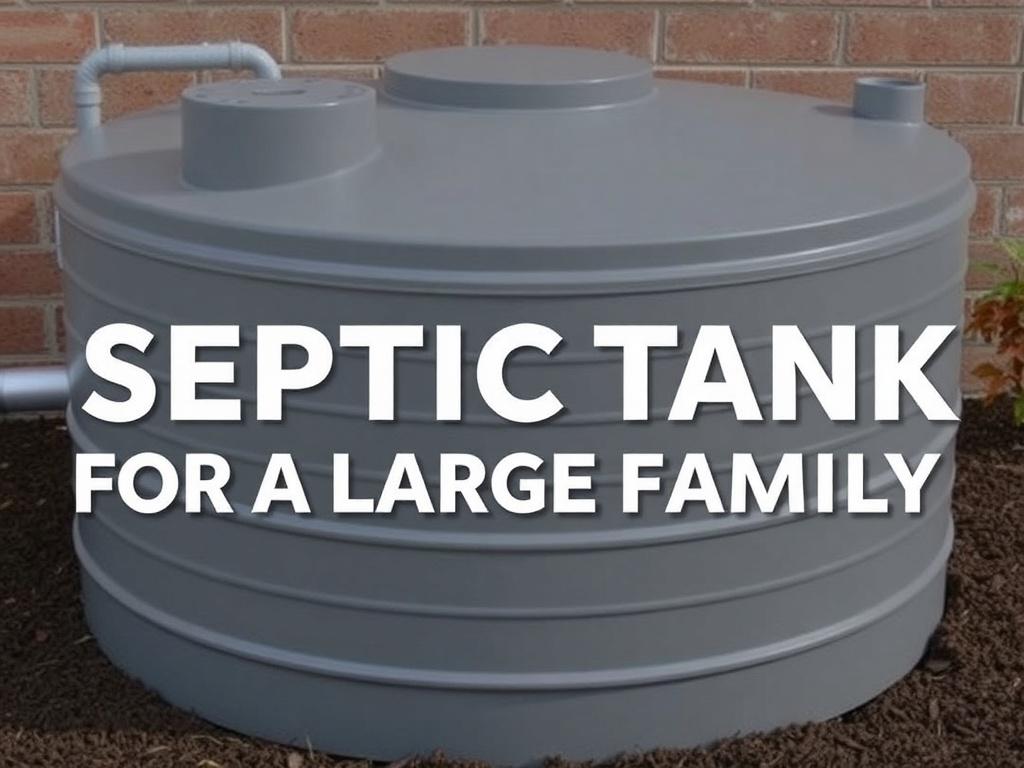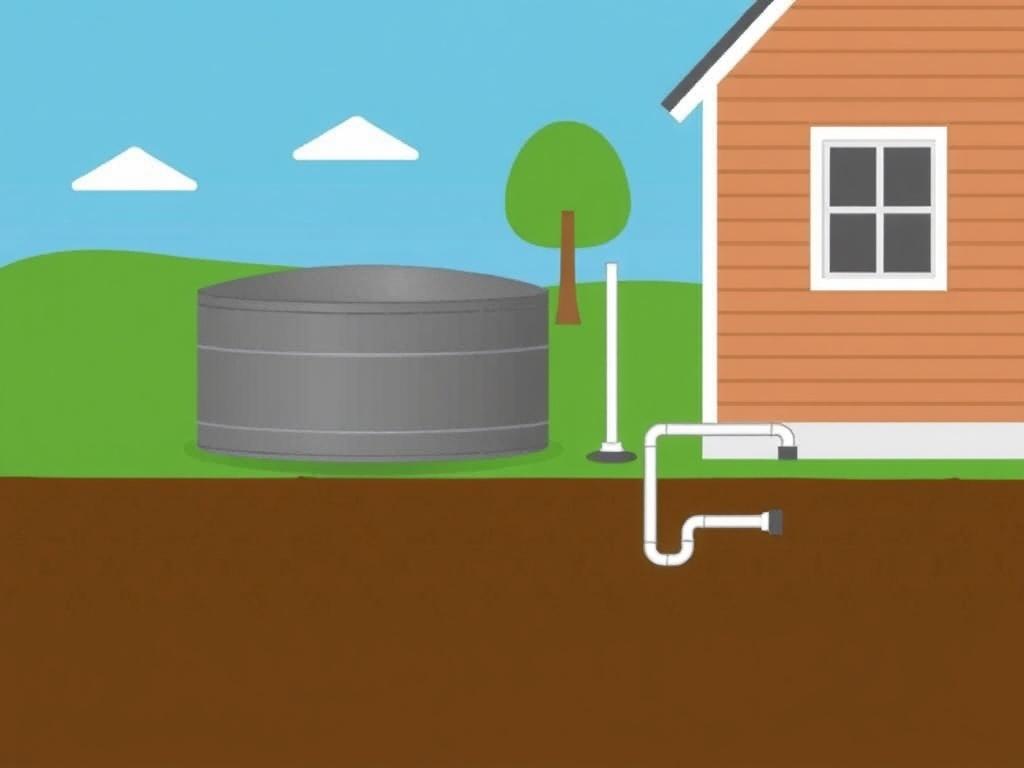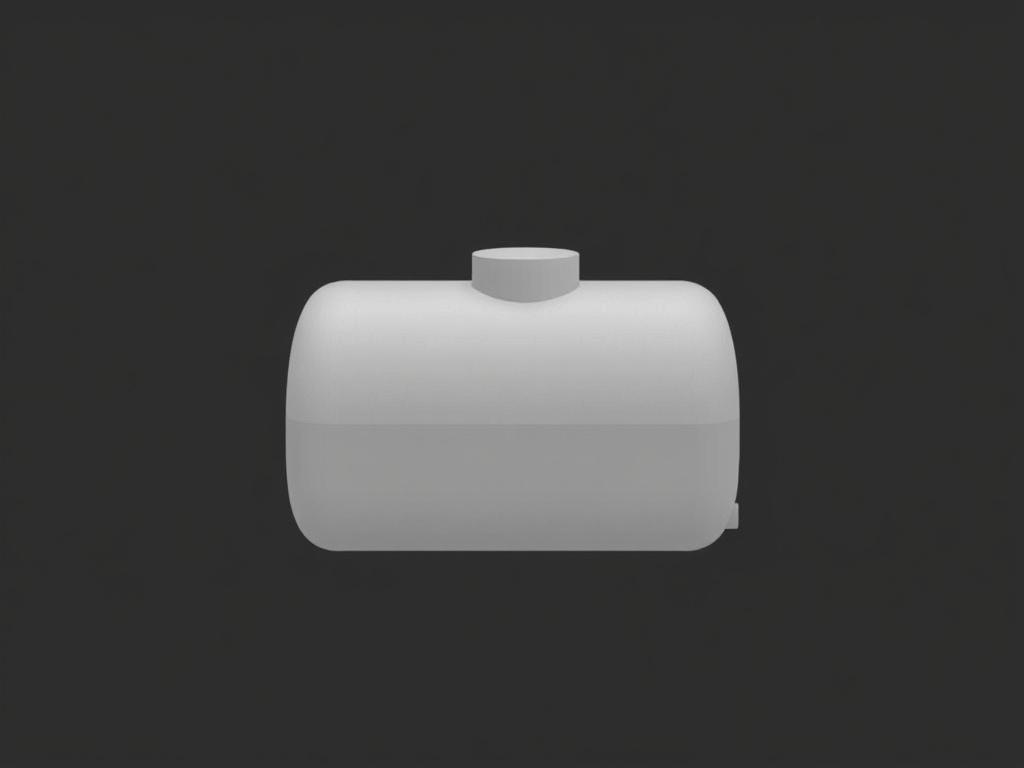When it comes to managing wastewater at home, a well-sized septic tank is an absolute necessity, especially for a large family. Unlike traditional sewer systems, septic tanks operate on-site and require proper planning to handle the volume of waste efficiently. Choosing the right septic tank size ensures that your system functions smoothly, prevents costly repairs, and supports a healthy environment. But how do you determine the ideal septic tank size for a large family? In this comprehensive guide, we’ll break down everything you need to know—from estimating daily water usage to understanding local regulations—all in a straightforward, easy-to-follow manner.
- Understanding the Basics: What Is a Septic Tank?
- Why Proper Septic Tank Sizing Matters for Large Families
- Calculating Septic Tank Size for a Large Family
- Step 1: Estimate Daily Water Usage
- Step 2: Apply Local Regulations and Sizing Standards
- Step 3: Add Extra Capacity for Peak Usage and Maintenance
- Factors Affecting Septic Tank Size for a Large Family
- Household Activities and Appliances
- Number of Bedrooms vs. Actual Occupants
- Water Conservation Practices
- Materials and Types of Septic Tanks Suitable for Large Families
- Maintenance Tips for Large Family Septic Tanks
- Signs Your Septic Tank May Be Undersized
- Septic Tank Installation Considerations for Large Families
- Cost Factors: How Much Does a Septic Tank for a Large Family Typically Cost?
- Final Thoughts: Balancing Your Large Family’s Needs with Septic Tank Capacity
- Conclusion
Understanding the Basics: What Is a Septic Tank?
A septic tank is an underground chamber designed to treat and dispose of household wastewater. It collects wastewater from toilets, sinks, showers, and laundry, allowing solids to settle to the bottom while oils and grease float to the top. The middle liquid layer then exits the tank into a drain field, where natural soil filtration takes place. For large families, having a septic tank that effectively manages large volumes of wastewater is critical to avoid backups, odors, or groundwater contamination.
Since septic tanks vary in size, understanding your family’s daily water consumption helps identify the right capacity. Most septic tanks are made from materials such as concrete, fiberglass, or polyethylene, with varying durability and installation requirements.
Why Proper Septic Tank Sizing Matters for Large Families

Large families use more water, and more water means more waste. When a septic tank is too small, it quickly becomes overloaded leading to poor separation of solids and liquids, sewage backups, and even system failure. Conversely, if the tank is oversized, you might face unnecessary installation and maintenance costs.
A well-sized septic tank provides several benefits:
- Prevents system failure by handling expected wastewater volumes
- Reduces maintenance frequency and costs
- Minimizes unpleasant odors and backups
- Supports environmental safety by effectively treating waste
Calculating Septic Tank Size for a Large Family
Sizing a septic tank isn’t guesswork—it’s about calculating how much wastewater your household generates daily plus some extra capacity for sludge accumulation between pump-outs. Here’s the practical approach:
Step 1: Estimate Daily Water Usage
On average, a person uses about 50 to 70 gallons of water per day for all household needs. For a large family, multiply the number of people by the average gallons per person.
| Family Size | Average Water Usage Per Person (gallons/day) | Estimated Total Daily Usage (gallons) |
|---|---|---|
| 5 | 60 | 300 |
| 6 | 60 | 360 |
| 7 | 60 | 420 |
| 8 | 60 | 480 |
Step 2: Apply Local Regulations and Sizing Standards
Many municipalities follow guidelines based on the number of bedrooms or family members. For example, the U.S. Environmental Protection Agency (EPA) recommends septic tanks with capacities ranging from 750 to 1,500 gallons for typical households, with larger sizes needed for growing families.
Here’s a general septic tank sizing guide based on family size:
| Number of People | Minimum Septic Tank Size (gallons) |
|---|---|
| 1-3 | 750 |
| 4-5 | 1,000 |
| 6-7 | 1,250 |
| 8 or more | 1,500+ |
Step 3: Add Extra Capacity for Peak Usage and Maintenance
Since families have varying water usage patterns with fluctuating peaks, it’s smart to select a tank with some buffer capacity beyond average daily usage. A standard recommendation is to add 25-30% extra volume to your calculated daily flow to reduce pumping frequency and accommodate sudden increases in usage.
Factors Affecting Septic Tank Size for a Large Family
While calculations are a good starting point, several factors influence the final decision on septic tank size:
Household Activities and Appliances
A home with multiple bathrooms, a dishwasher, washing machine, or a jacuzzi will naturally produce more wastewater. For example, washing machines can generate 30-45 gallons per load, directly affecting tank capacity.
Number of Bedrooms vs. Actual Occupants
Local codes sometimes size septic tanks based on bedrooms, assuming 2 people per bedroom. However, if your family has more occupants, adjust the tank size accordingly.
Water Conservation Practices
Large families that follow water-saving routines, such as using low-flow fixtures or limited laundry cycles, may require relatively smaller tank sizes. Conversely, high water usage habits will push towards larger tanks.
Materials and Types of Septic Tanks Suitable for Large Families

Choosing the right septic tank material and type is as important as sizing. Here are common options:
- Concrete Tanks: Heavyweight and durable, ideal for larger capacities but require professional installation.
- Fiberglass Tanks: Lightweight, resistant to cracking, and easier to install, suitable for various sizes.
- Polyethylene Tanks: Affordable and corrosion-resistant but can be less durable over time.
Different tank types, like single-chamber or multi-chamber tanks, also affect treatment efficiency. Multi-chamber tanks separate solids more effectively, beneficial for large families.
Maintenance Tips for Large Family Septic Tanks
A larger tank doesn’t mean zero maintenance. Regular upkeep prolongs system life and avoids problems. Here’s a quick maintenance checklist:
- Pumping Frequency: Typically every 3-5 years but can be shorter for large families.
- Water Usage Management: Avoid overloading the system with excessive water flows.
- Proper Waste Disposal: Never flush grease, feminine hygiene products, or non-biodegradable items.
- Inspect for Leaks: Periodically check the tank and drain field for signs of leaks or damage.
Signs Your Septic Tank May Be Undersized
Be alert to these warning signs that your tank may not be coping with household demands:
- Sewage backups inside the home
- Slow draining toilets or sinks
- Foul odors near the septic tank or drain field
- Pooling water or soggy soil in the yard
If any of these appear, contact a septic professional immediately.
Septic Tank Installation Considerations for Large Families
Installing a septic tank is a significant investment, and proper planning is crucial. For large families:
- Choose an Experienced Installer: Ensure compliance with local codes and regulations.
- Location: The tank should be placed where it can be easily accessed for inspection and pumping.
- Drain Field Size: Must be adequate to receive wastewater for treatment; often grows with family size.
- System Upgrades: If your family size increases over time, design the system to allow future expansion.
Cost Factors: How Much Does a Septic Tank for a Large Family Typically Cost?
Septic tank prices vary depending on size, material, labor, and site work. Below is a rough cost breakdown for large family septic systems:
| Component | Estimated Cost Range (USD) |
|---|---|
| Septic Tank (1,250 – 1,500 gallons) | $1,500 – $3,000 |
| Installation and Excavation | $3,000 – $7,000 |
| Drain Field | $5,000 – $15,000 |
| Total Estimated Cost | $9,500 – $25,000+ |
Remember, investing in the right tank size and quality installation saves more money over time by preventing failures.
Final Thoughts: Balancing Your Large Family’s Needs with Septic Tank Capacity

Choosing the right septic tank size for a large family might seem complex, but breaking it down step-by-step makes the task manageable. By understanding daily water use, checking local regulations, considering household habits, and planning for future growth, you can select a septic system that works efficiently and lasts for years. Always consult with a qualified septic installer or engineer to tailor your septic tank size and system design for your unique needs. Happy planning!
Conclusion
Selecting the perfect septic tank for a large family involves a thoughtful approach that balances wastewater volume, household habits, and regulatory guidelines. Proper sizing not only keeps systems running smoothly but also provides peace of mind knowing your home’s sanitation is handled reliably. With the right information and professional guidance, building a septic system suitable for your family’s needs becomes a straightforward process. Remember, investing time in planning and sizing today prevents headaches tomorrow—so take the necessary steps to size your septic tank correctly and enjoy a cleaner, healthier home environment.
Помогла вам статья?






